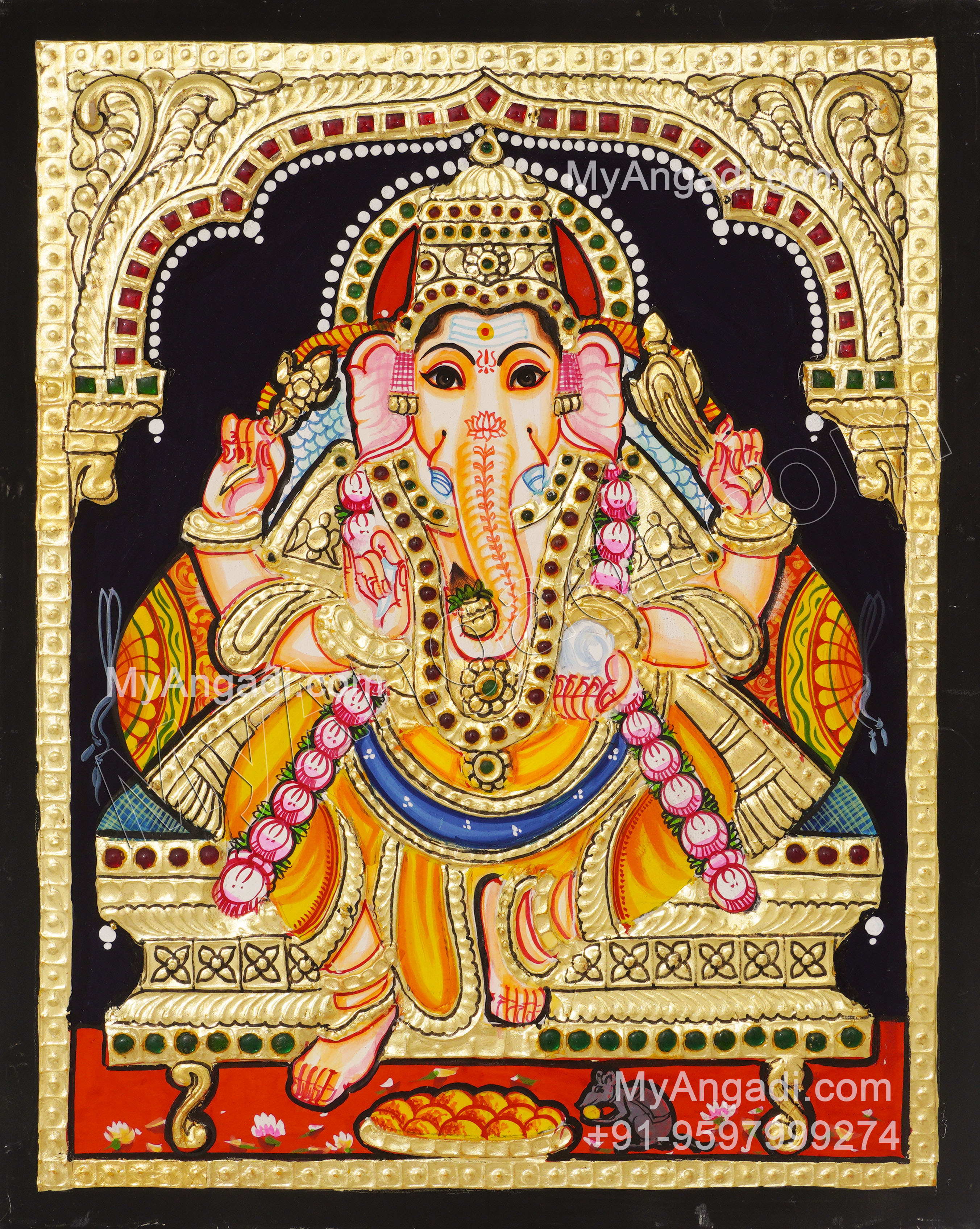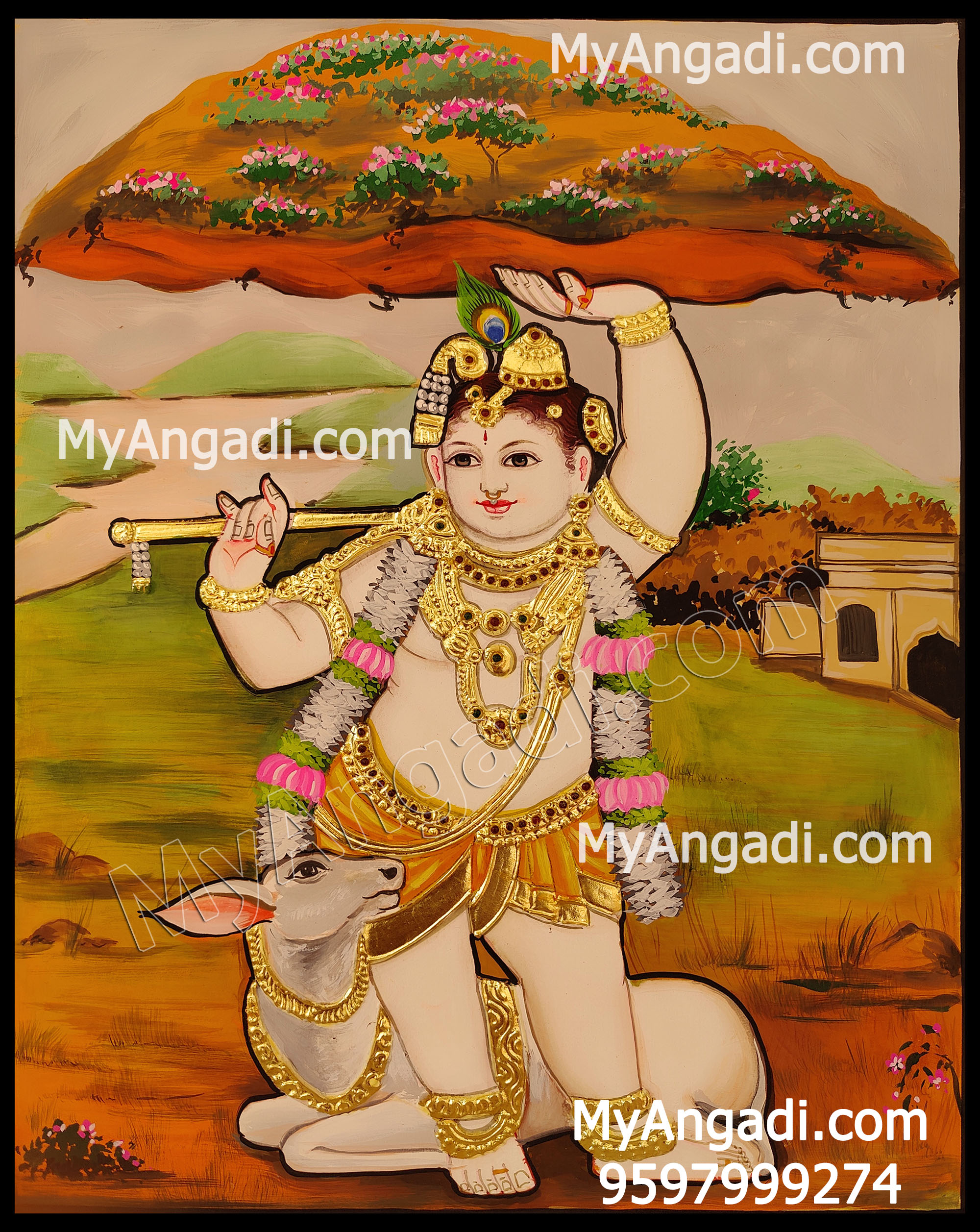The Timeless Elegance of Tanjore Painting: A Glimpse into India's Artistic Heritage

Art is a medium that transcends time and space, allowing us to connect with the rich cultural heritage of our ancestors. One such treasure trove of artistic brilliance is Tanjore painting, a traditional art form that hails from the culturally vibrant state of Tamil Nadu, India. With its intricate detailing, vibrant colors, and deep spiritual significance, Tanjore painting has carved a niche for itself in the world of art. In this blog, we will explore the history, techniques, and significance of Tanjore painting, shedding light on its enduring appeal.
The History of Tanjore Painting
Tanjore painting, also known as Thanjavur painting, owes its name to the town of Thanjavur (formerly known as Tanjore) in Tamil Nadu, where it originated during the Maratha rule in the 16th century. The Marathas, who ruled over this region, were great patrons of art and culture. It is believed that the roots of Tanjore painting can be traced back to the traditions of the Nayakas of Thanjavur, who were influenced by the artistic styles of the Vijayanagara Empire.
Techniques and Materials
Tanjore paintings are known for their distinctive features, including the use of rich, vibrant colors, intricate gold leaf work, and the depiction of deities, saints, and mythological stories. Here are some key techniques and materials that make Tanjore painting unique:
Canvas: Traditionally, these paintings are done on wooden planks or boards, with the surface prepared using a mixture of chalk and Arabic gum, creating a smooth and durable base for the artwork.
Gold Leaf: One of the most iconic features of Tanjore painting is the application of gold leaf or gold foil to certain elements of the painting, such as jewelry, thrones, and backgrounds. This gives the artwork a distinct shine and opulence.
Vibrant Colors: Tanjore paintings make extensive use of vivid colors, often obtained from natural sources like minerals, vegetables, and even semi-precious stones. The bold use of colors adds depth and charm to the artwork.
Gesso Work: Intricate patterns and designs are created using a paste made of limestone powder and a binding medium. These raised structures provide texture and depth to the paintings.
Intricate Details: The fine detailing in Tanjore paintings, especially in the depiction of jewelry, clothing, and facial features, showcases the artist's skill and dedication to the craft.
Themes and Subjects
Tanjore paintings primarily revolve around religious and mythological themes. Hindu gods and goddesses, particularly Lord Krishna, Lord Ganesha, and Goddess Lakshmi, are popular subjects. Additionally, scenes from ancient Indian epics like the Ramayana and Mahabharata are frequently depicted. The choice of subject matter reflects the deep spiritual and cultural roots of this art form.
Significance and Cultural Heritage
Tanjore paintings hold a special place in Indian culture and heritage. They are not merely decorative pieces but also serve as objects of devotion and reverence in many households. These paintings are often found adorning the walls of temples, homes, and even public spaces.
Tanjore paintings encapsulate the essence of South Indian culture, spirituality, and artistic expression. They have survived the test of time, maintaining their relevance and appeal through the centuries. Today, artisans and artists continue to preserve and promote this traditional art form, ensuring that it remains an integral part of India's artistic legacy.

